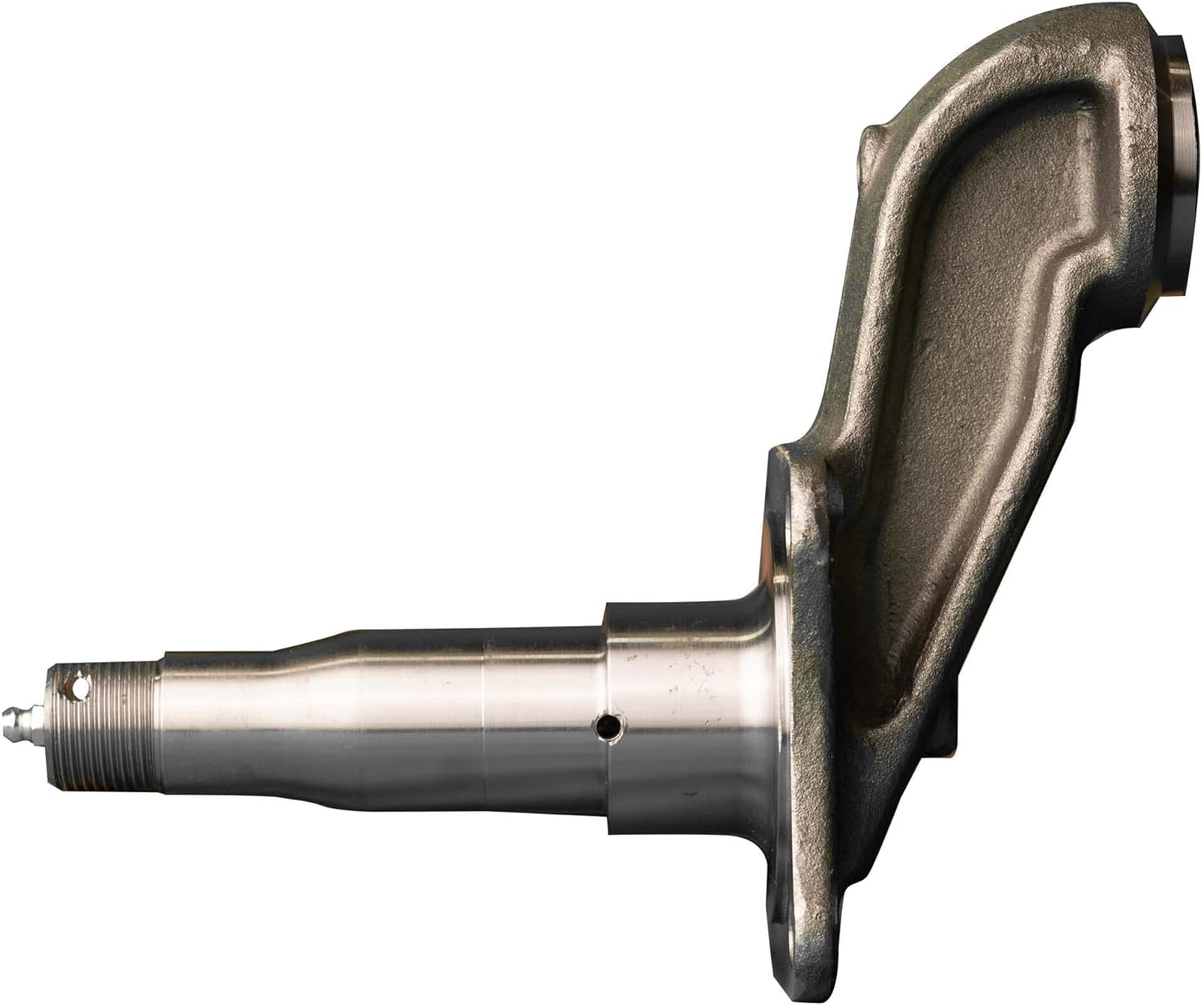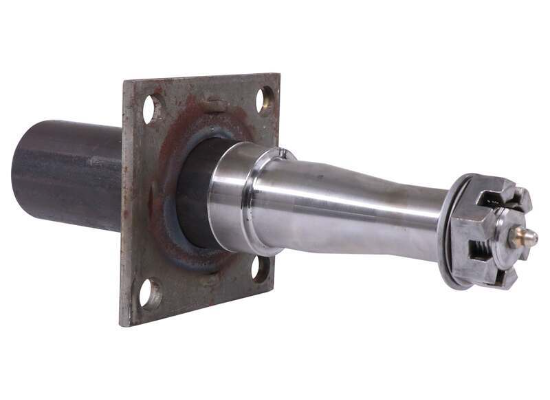Product Description
Customized Mechanical Parts Alloy Steel Trailer Forgings Torsion Arm
|
item |
value |
|
Place of CHINAMFG |
China |
|
Province |
ZheJiang |
|
Model Number |
Customized Services |
|
Process |
Mainly Hot forging, Some parts with Cold forging ,die forging and Free forgin will be OK |
|
Material |
Carbon steel: CM490,A36,1045,1035 etc., Alloy steel: 40Cr, 20CrMnTi, 20CrNiMo, 42CrMo4 etc., Stainless steel, SS304,SS316 etc. |
|
Weight |
1kg – 120kg |
|
Applicable Machining Process |
CNC Machining/ Lathing/ Milling/ Turning/ Boring/ Drilling/ Tapping/ Broaching/Reaming etc. |
|
Machining Tolerance |
0.03mm-0.1mm |
|
Applicable Finish Surface Treatment |
Shot/sand blast, polishing, Surface passivation, Primer Painting , Powder coating, ED- Coating, Chromate Plating, zinc-plate, Dacromat coating, Finish Painting, |
|
Testing equipment |
Supersonic inspection machine, Supersonic flaw detecting machine , physics and chemical analysis. |
|
MOQ of mass production |
1000-5000pcs |
|
Testing equipment |
Optical Spectrum Analyzer,tensile testing machine,impact testing machine,fluorescent magnetic particle detector,hardness tester,ultrasonic flaw detector..etc. |
|
Packing |
Wooden cases or according to customers’ needs |
1. who are we?
We are based in ZheJiang , China, start from 2571,sell to North America(10.00%),South America(10.00%),Southeast
Asia(10.00%),Africa(10.00%),Mid East(10.00%),Eastern Asia(10.00%),Central America(10.00%),Northern Europe(10.00%),South
Asia(10.00%),Domestic Market(10.00%). There are total about 11-50 people in our office.
2. how can we guarantee quality?
Always a pre-production sample before mass production;
Always final Inspection before shipment;
3.what can you buy from us?
semi trailer axles, air suspensions , chamber,wheel ,slack adjuster and other related items.
4. why should you buy from us not from other suppliers?
We have a trailer parts production more than 10 years the supply chain
5. what services can we provide?
Accepted Delivery Terms: FOB,CIF,EXW;
Accepted Payment Currency:USD,EUR,JPY,CAD,AUD,HKD,GBP,CNY,CHF;
Accepted Payment Type: T/T;
Language Spoken:English,Chinese
6.what is the certificate
At present, the company can undertake CCS, ABS, BV, GL and other certification products /* January 22, 2571 19:08:37 */!function(){function s(e,r){var a,o={};try{e&&e.split(“,”).forEach(function(e,t){e&&(a=e.match(/(.*?):(.*)$/))&&1
| After-sales Service: | Available |
|---|---|
| Condition: | New |
| Application: | Trailer |
| Certification: | ASTM, CE, DIN, ISO |
| Material: | Steel |
| Transport Package: | Customized |
| Customization: |
Available
|
|
|---|

Can you provide insights into the importance of proper installation and alignment of trailer spindles?
Proper installation and alignment of trailer spindles are of utmost importance for the safe and efficient operation of trailers. Here’s a detailed explanation:
1. Safety: Ensuring the proper installation and alignment of trailer spindles is crucial for maintaining safe towing conditions. When spindles are installed correctly, they provide structural integrity and stability to the trailer. Proper alignment ensures that the wheels track straight and true, reducing the risk of swaying, fishtailing, or loss of control while towing. Incorrect installation or misalignment can lead to handling issues, increased risk of accidents, and compromised safety for both the driver and other road users.
2. Load Distribution: Properly installed and aligned trailer spindles contribute to effective load distribution. They help evenly distribute the weight of the trailer and its cargo across the axles and wheels. This balanced distribution minimizes excessive stress on specific components, such as tires, suspension, and bearings, ensuring their optimal performance and longevity. Improper installation or misalignment can lead to uneven weight distribution, which may result in premature wear, tire blowouts, or other mechanical failures.
3. Tire Wear: Correct spindle installation and alignment play a significant role in reducing tire wear. When the spindles are aligned properly, the trailer wheels track in a straight line, resulting in even tire wear. Misalignment, on the other hand, can cause irregular tire wear patterns, such as cupping or feathering, which decrease tire lifespan and performance. Proper alignment of spindles helps to maximize tire longevity and maintain optimal traction and handling characteristics.
4. Bearing Performance: Trailer spindles directly impact the performance and lifespan of the bearings. Proper installation ensures that the spindles are securely attached to the trailer frame, providing a stable platform for the bearings. Misalignment or inadequate installation can cause excessive stress on the bearings, leading to premature wear, overheating, and potential bearing failure. Proper alignment and installation of spindles help to maintain the bearings’ integrity, ensuring smooth rotation, reduced friction, and optimal load support.
5. Fuel Efficiency: Properly installed and aligned spindles can contribute to improved fuel efficiency. When the trailer wheels are properly aligned, they experience reduced rolling resistance, resulting in lower energy consumption and improved fuel economy. Misalignment can cause increased rolling resistance, leading to higher fuel consumption during towing.
6. Handling and Stability: Correct spindle installation and alignment contribute to the overall handling and stability of the trailer. Proper alignment ensures that the trailer tracks in a straight line, allowing for predictable and controlled towing. Misalignment can cause the trailer to pull to one side, leading to unstable towing conditions, reduced maneuverability, and potential loss of control.
7. Longevity and Cost Savings: Proper installation and alignment of trailer spindles contribute to the longevity of various trailer components, including tires, bearings, suspension systems, and axles. By minimizing excessive wear, stress, and premature failures, proper alignment and installation help to extend the lifespan of these components. This leads to cost savings in terms of reduced maintenance, repairs, and replacement of parts.
It’s important to follow the manufacturer’s guidelines and recommendations for the installation and alignment of trailer spindles. This may involve using proper tools, torque specifications, and alignment procedures. Seeking professional assistance or consulting with experienced professionals can also ensure accurate installation and alignment, especially when dealing with complex trailer configurations or modifications.
Overall, proper installation and alignment of trailer spindles are vital for safety, load distribution, tire wear, bearing performance, fuel efficiency, handling, stability, longevity, and cost savings. By paying attention to these critical aspects, trailer owners can optimize the performance and reliability of their towing systems.

What maintenance practices are recommended for trailer spindles to ensure optimal functionality?
Proper maintenance of trailer spindles is essential to ensure their optimal functionality and extend their lifespan. Here are some recommended maintenance practices:
- Regular Inspections: Conduct regular visual inspections of the trailer spindles to check for any signs of damage, wear, or corrosion. Look for cracks, bends, or excessive rust that may compromise the spindle’s integrity. Inspect the spindle nuts, bearings, and seals for proper alignment and condition.
- Lubrication: Proper lubrication is crucial for smooth spindle operation and minimizing friction. Follow the manufacturer’s recommendations for lubrication intervals and use a high-quality grease suitable for trailer spindles. Apply grease to the bearings and spindle surfaces as per the instructions, ensuring even distribution.
- Bearing Maintenance: Inspect and repack the wheel bearings regularly to prevent overheating and premature wear. Clean the bearings and races thoroughly, remove old grease, and repack them with fresh grease. Replace worn or damaged bearings promptly to avoid potential failures.
- Seal Inspection: Check the condition of the spindle seals to ensure they provide adequate protection against dirt, water, and contaminants. Replace damaged or worn seals to maintain proper lubrication and prevent moisture ingress, which can lead to bearing damage.
- Torque Checks: Periodically check and adjust the torque of the spindle nuts to ensure proper bearing adjustment. Follow the manufacturer’s specifications for the recommended torque values and tightening sequence. Over-tightened or loose spindle nuts can lead to bearing damage and compromised spindle performance.
- Brake System Maintenance: If the trailer has brake spindles, inspect and maintain the brake system components as per the manufacturer’s recommendations. Check the brake pads, calipers, and brake lines for wear, damage, or leaks. Keep the braking system clean and adjust the brakes as necessary for optimal stopping performance.
- Protection from Environmental Elements: Protect the spindles from harsh environmental conditions, such as excessive moisture, saltwater, or chemicals. If the trailer is exposed to these elements, consider using protective coatings or covers to minimize corrosion and damage.
- Professional Servicing: For complex maintenance tasks or if you’re unsure about any specific maintenance procedure, it’s recommended to seek professional servicing. Trained technicians can perform comprehensive inspections, bearing replacements, or other specialized maintenance tasks to ensure the optimal functionality of the trailer spindles.
Following these maintenance practices will help ensure the optimal functionality and longevity of trailer spindles. Regular inspections, proper lubrication, bearing maintenance, seal inspections, torque checks, brake system maintenance, protection from environmental elements, and professional servicing when needed are all important steps in maintaining trailer spindles in good working condition.
Remember to consult the trailer manufacturer’s guidelines and recommendations for specific maintenance requirements and intervals based on the spindle type and trailer model.

In what types of trailers are spindles commonly used, and how do they vary?
Trailer spindles are commonly used in various types of trailers, and their design can vary depending on the specific trailer application. Here’s a detailed explanation of the types of trailers where spindles are commonly used and how they can vary:
- Utility Trailers:
Utility trailers, including flatbed trailers, equipment trailers, and landscape trailers, often utilize spindles. These trailers are commonly used for transporting a wide range of goods and equipment. The spindles used in utility trailers can vary in size, load-bearing capacity, and configuration to accommodate different trailer sizes and weight requirements.
- Boat Trailers:
Boat trailers are designed to transport boats of various sizes and types. Spindles used in boat trailers are typically designed to withstand corrosive environments due to exposure to water and may incorporate special coatings or materials to enhance durability. They can also have unique features such as bearing buddies or seals to provide additional protection against water intrusion and lubrication.
- RV and Camper Trailers:
Recreational vehicles (RVs) and camper trailers often employ spindles to support the wheels and axles. These spindles are designed to handle the weight of the living quarters and amenities found in these trailers. They may have specific load-bearing capacities and configurations to meet the requirements of different RV and camper trailer sizes and designs.
- Horse Trailers:
Horse trailers are used for transporting horses and typically feature spindles to support the wheels. These spindles are designed to withstand the additional dynamic loads and stresses associated with transporting live animals. They may have features such as grease fittings or sealed bearings for ease of maintenance and durability.
- Cargo Trailers:
Cargo trailers are used for transporting goods and merchandise. They often incorporate spindles to support the wheels and accommodate the weight of the cargo. The design of spindles used in cargo trailers can vary depending on the trailer’s size, load capacity, and intended use.
- Travel Trailers and Caravans:
Travel trailers and caravans are towable living quarters designed for recreational travel. They utilize spindles to support the wheels and axles. The spindles used in travel trailers and caravans can vary depending on the trailer’s size, weight, and specific features. They may incorporate features for ease of maintenance and durability, such as grease fittings or sealed bearings.
In summary, spindles are commonly used in a wide range of trailers, including utility trailers, boat trailers, RV and camper trailers, horse trailers, cargo trailers, and travel trailers. The design of spindles can vary based on the specific trailer application, including size, weight capacity, load-bearing requirements, and environmental considerations. These variations ensure that the spindles are well-suited to the demands of different trailer types and provide reliable support for the wheels and axles during towing.


editor by Dream 2024-04-23